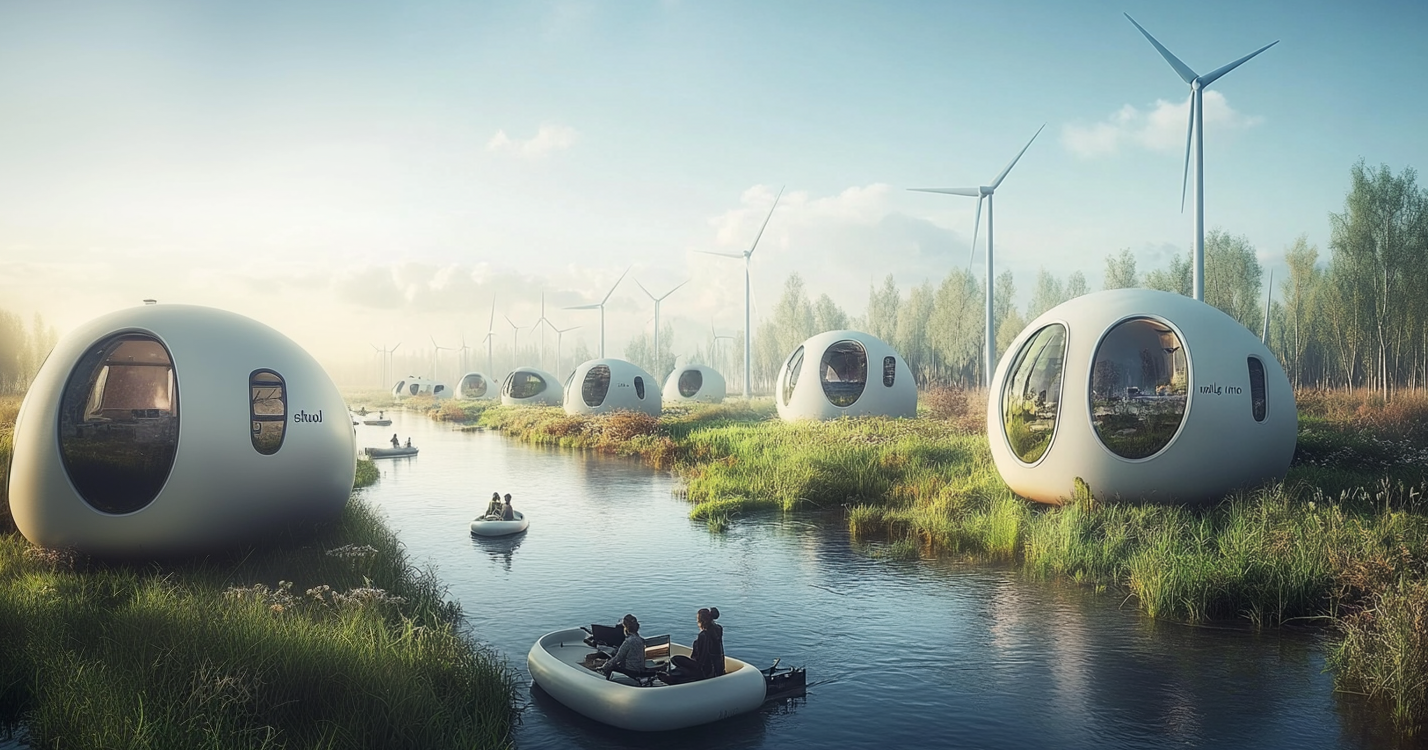The votes for the 2025 Vision Awards have been counted! Discover this year's cohort of top architectural representations and sign up for the program newsletter for future updates.
I have always found buildings with legs quite intriguing. Howl’s Moving Castle by Studio Ghibli, the science fiction film Mortal Engines and even Archigram’s famous Walking City have always teased out this untapped potential of an architecture that moves. Still, I do not believe that architects have spent nearly enough time studying mobile architecture forms and strategies as they do for traditional, static buildings — and, by extension, cities.
On the one hand, this makes a lot of sense: what architect would want to spend time, money and energy to design an architecture of impermanence? It offers a lot less convenience, it is way harder to implement and ultimately, it lacks prestige.
Yuval Noah Harari’s acclaimed book, Sapiens: A Brief History of Humankind, traces the history of Homo sapiens, starting from the Stone Age and ending in the 21st century. What struck me while reading it was the (forgotten) fact that early human settlements were often semi-nomadic, shifting with the seasons or available resources. It wasn’t until the Agricultural Revolution that humans started to permanently settle in specific parts of the world, usually in locations near water or fertile valleys. In other words, land cultivation is the reason why architects currently have jobs.
According to Harari, however, the Agricultural Revolution marked the beginning of humanity’s downfall, as it led to our own domestication. No longer content with simple survival, humans began to seek ever more — more food, more water, more land, more wealth, more comfort and more technology. This insatiable desire fueled urban sprawl and reshaped human life around constant expansion and accumulation.
Discussing mobile cities does not necessarily mean that we have to return to building tents or homes out of mud and rocks; however, having a wider mindset of impermanence (and thus architecture) might solve a lot of contemporary issues our world is currently facing. The aftermath of natural disasters, resource scarcity and even political needs could greatly benefit if a handful of architects devoted themselves to study methods of designing mobile cities.
During the 2023 Venice Biennale, the Norman Foster Foundation presented a real-size prototype of the Essential Homes Research Project, a concept designed to provide rapidly assembled housing for people displaced by natural or manmade disasters. Designed in collaboration with Holcim, the structure stands as an alternative to traditional tent shelters, featuring a durable exterior: a catenary arch-shaped formwork over which a rollable canvas containing a low-carbon cement mix is draped. As soon as the canvas is sprayed with water, it dries and hardens, forming a solid shell.
When 70°N arkitektur was invited to the European exhibition PARASITE – Prototypes for Amphibious, Readymade, Advanced, Small-scale, Individual, Temporary, Ecological houses – the office developed a prototype structure titled XBO: a 40-foot-long (12 meter), 10-foot-wide (3,2 meter) and 12-foot-high (3,5 meter) unit that, when unfolded, provides comfortable living in any location. Easily transportable via truck, its primary goal is to use minimal resources and maximize the qualities of active living, while adapting in any type of context.
Finally, in September 2024, an international humanitarian contest organized by Archstorming on behalf of Tunisian charity Wallah We Can, for new mobile school concepts in Palestine was announced. The competition calls for proposals for new educational spaces that can be easily installed, dismantled and rebuild in any location, starting from a site next to Khan al-Ahmar village in the West Bank, which has been under the threat of demolition for fifteen years. The Wallah We Can charity has held similar open calls for a modular preschool concept in Ethiopia, a secondary school in Malawi as well as a large family home in Tanzania.
My inclination is to say that the future of mobile cities holds a mix of permanent and impermanent architecture. The scenario in which our thousand year old cities are abandoned and where humans hit the roads once more is rather far-fetching. On the other hand, emerging lifestyle trends such as digital nomadism, challenge preconceptions on how humans wish to live. In truth, our current “human settlements” have become quite stifling: too many people, too much traffic and not enough space are all issues we face daily.
But what if we could decongest our cities entirely? Imagine a world where we build self-sustaining, clean-energy power stations by rivers or in wide, open fields — not to transfer power back to centralized cities, but so people could “plug into” these hubs directly, staying for a few weeks or months before moving on to another location. Education, too, would no longer be bound to static institutions; instead, “school” could be a dynamic journey, actively engaging students with diverse cultures, landscapes and communities.
Though mobile architecture has mostly been tested on a small scale, for example through emergency relief housing or temporary event structures, the potential it holds could transform the way we think about cities and communities altogether. The possibilities are endless: a future of adaptable, resilient living spaces that encourage sustainable use of resources, connect people to the land, and offer freedom from the constraints of static urbanization.
The votes for the 2025 Vision Awards have been counted! Discover this year's cohort of top architectural representations and sign up for the program newsletter for future updates.
Featured Image: XBO Mobile Unit by 70 N arkitektur as





